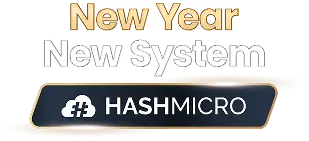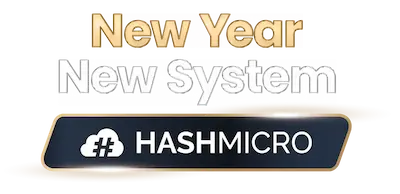E-learning, also known as online or digital learning, allows me to access education anytime and anywhere using a laptop, tablet, or smartphone. This flexibility makes learning more efficient and accessible for everyone.
As someone who works in the education field, I rely heavily on my laptop to run coding tools, virtual environments, and online resources. Choosing the correct device is essential to support my learning process effectively.
Since the pandemic, e-learning has become a necessity for schools and educators worldwide. I’ve found that using HashMicro Smart Education Software makes online learning more organized and impactful. Get a free demo today and experience how it can transform your e-learning journey.
Also read: How to Make The Most Effective Lesson Plan for Your Class
Key Takeaways
|
What is E-Learning?
E-learning is a teaching method that involves using the Internet to facilitate communication between teachers and students. Different types of classes can be brought to the virtual world by employing e-learning platforms and applications that assist knowledge transfer.
Before the pandemic, I attended most classes in physical classrooms, but now I can join virtual sessions anytime and anywhere. This flexibility has been made possible by the rapid growth of SaaS in the learning industry.
Challenges of E-Learning
From my experience, e-learning provides incredible flexibility, but it’s not without its challenges. I’ve learned that recognizing these obstacles is the first step toward creating a smoother and more effective online learning experience.
Here are the main challenges of E-Learning:
- Limited digital skills: Some learners struggle to use computers or online platforms efficiently, which hinders participation.
- Low self-motivation: Without direct supervision, maintaining focus and discipline can be difficult for many students.
- Technical issues: Poor internet connectivity or outdated devices often disrupt learning continuity.
- Lack of interaction: The absence of face-to-face communication can make learners feel isolated and less engaged.
- Assessment difficulties: Ensuring fair and accurate evaluation in an online setting can be challenging for educators.
What are the Benefits of E-Learning?
From my perspective, e-learning has transformed how both students and teachers experience education. It creates a flexible, efficient, and engaging learning environment that enhances collaboration, reduces workload, and promotes continuous growth for everyone involved.
Benefits of E-Learning for Students:
- Better collaboration: Enables interaction with peers and teachers globally, fostering teamwork and communication skills.
- Learning flexibility: Allows students to study at their own pace and balance academics with personal activities.
- Resource accessibility: Provides instant access to a diverse range of learning materials, anytime, anywhere.
- Improved self-discipline: Encourages students to take responsibility for their own learning progress.
- Global exposure: Expands opportunities to learn from international educators and participate in cross-cultural discussions.
Benefits of E-Learning for Teachers:
- Reduced workload: Automates administrative tasks like grading and attendance, saving time for research and teaching.
- Enhanced teaching methods: Incorporates digital tools to create more interactive and engaging lessons.
- Flexible teaching environment: Enables teachers to manage courses and communicate with students remotely.
- Data-driven insights: Offers analytics to track student progress and adjust teaching strategies effectively.
- Broader reach: Allows educators to teach and inspire students beyond geographical limitations.
What are the Values of E-Learning?

I’ve found that online learning offers many advantages over traditional instruction, giving me the freedom to learn at my own pace and choose the environment that suits me best.
In addition, e-learning is both cost-effective and cost-efficient since it eliminates the geographical barriers that often exist in conventional classrooms and education. If you want to pass your GCSE English exam, you can easily find a GCSE English tutor online nowadays and study from the comfort of your home.
However, it should be mentioned that e-learning is not flawless. Internet-based learning of any of the numerous varieties necessitates compromises in one way or another.
Among the obstacles that must be addressed are the increased chance of cheating during assessments, social isolation, and lack of development of communication skills among online students. Read our separate page to know the downsides to get a more comprehensive understanding of its limitations.
The Use of E-Learning in Education

I’ve seen how e-learning can be applied across many areas of society, and I’ve witnessed countless examples of its successful implementation.
1. Adult e-learning
Many difficulties that adult learners have with studying are often overcome via online learning. Through online learning, they can advance at their own pace and complete projects and tests at their convenience.
Adult learners particularly benefit from this sort of flexibility since they often have to manage work, home responsibilities, and online study with the help of adult e-learning.
Also read: Why is ERP Software for Schools Important in Modern Education?
2. Corporative e-learning
Corporate e-learning offers a modern way for businesses to train and educate employees through online platforms. It transforms traditional in-person sessions into engaging virtual classrooms tailored to company needs.
Designed specifically for the business environment, corporate e-learning enhances accessibility and flexibility, allowing for seamless learning experiences. This approach improves employee engagement, retention, and overall learning effectiveness.
3. Online colleges
E-learning offers immense potential for educational institutions by expanding the reach and impact of their academic programs. With advanced online platforms, universities can deliver quality education to a broader audience.
Accredited colleges now offer online degrees that attract more students, eliminating physical and staffing limitations. By embracing e-learning, institutions can reduce costs, reach a global audience of learners, and enhance overall profitability.
4. Online learning in the future
Online education is poised for exponential growth as more institutions and learners recognize its value. Its role in shaping the future of global education continues to strengthen every year.
Many leading universities have already embraced online learning for its ability to transform knowledge and skill development. Soon, even more institutions will adopt this model to enhance learning outcomes worldwide.
Also read: Definition, Advantages, and 4 Best CRM System Singapore 2022
How E-Learning is Transforming Modern Education
From my experience, e-learning has completely transformed how we approach education today. It breaks traditional barriers by making learning more flexible, personalized, and globally connected, empowering both students and professionals to grow continuously.
Here’s how e-learning is transforming modern education:
- Flexible learning access: It enables learners to study at any time and from anywhere, balancing education with work or personal commitments.
- Global learning opportunities: Students can participate in international programs and interact with peers from around the world, transcending physical boundaries.
- Personalized learning paths: E-learning enables learners to focus on subjects that align with their interests and goals, thereby enhancing engagement and outcomes.
- Collaborative learning environment: It encourages teamwork and knowledge exchange through group projects, discussions, and virtual communities.
- Career and skill advancement: Professionals can enhance their skills through specialized online programs tailored to their schedules and career needs.
“E-learning is not just a digital alternative to traditional classrooms; it’s a transformation of how we engage, measure, and personalize learning. When used strategically, e-learning empowers educators to turn data into insight and learners into active participants in their own growth.”
— Angela Tan, Regional Manager
Conclusion
I use HashMicro Smart Education Software to help my school and business manage resources efficiently. This top school ERP solution enables me to streamline administration and optimize daily operations effectively.
The system provides essential tools for seamless e-learning, ensuring smooth collaboration between students, teachers, and staff. With its Cloud ERP integration, the platform guarantees easy access anytime, anywhere.
If you’re seeking a reliable e-learning solution, HashMicro Smart Education Software is the answer. Get your free demo today and experience how it enhances online learning efficiency.
FAQ About E-Learning
-
What is school management software?
For managing regular school operations, a school management software is the ideal option. It enables the school to control admissions, registration, the academic calendar, attendance, and other things.
-
What are the benefits of school management software?
The variety of reports created by the software, which can be used to make rapid and accurate decisions, is the main benefit of school management software for school managers and directors.
-
What is the scope of school management software?
Any action taken to raise the standard of education at any stage—from the provision of resources (material, human, and financial) to the most complex cultural or academic requirements—falls under the purview of educational management. This area of school administration is fairly broad.
-
Why do school need school management software?
One such game-changer was the school management software. It facilitated resources for instructors and students to use as rapid references, which made it easier to pay fees, keep systematic records of students and teachers, and facilitate different school activities.















